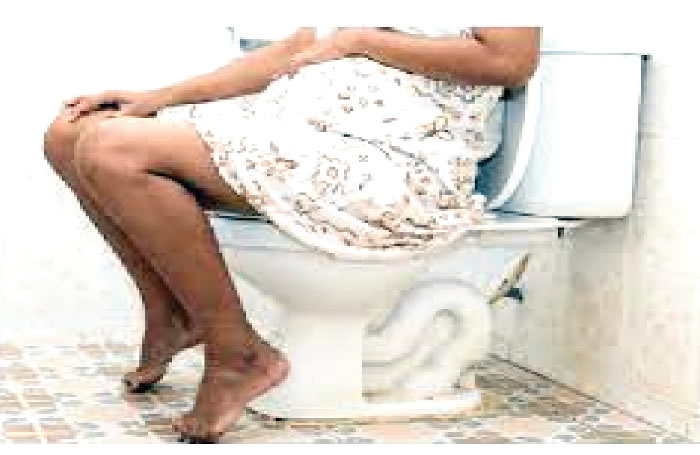Can extended time on the toilet be a reason for hemorrhoid development? Experts weigh in on their opinions.
Sakshi Srivastava, TW, September 05, 2025
CLAIM:
Sitting for extended periods in a toilet can cause piles.
FACT:
Prolonged sitting on the toilet does increase pressure on rectal veins and can contribute to piles. Experts advise limiting toilet time to 2–3 minutes, avoiding straining, and skipping phone use to reduce both hemorrhoid and infection risks.
An Instagram reel by fitness coach and influencer Priyank Mehta has sparked widespread discussion online over claims that sitting for too long on the toilet can cause piles.
The post has gone viral, with over 6.8 million views, 54,000 likes, and more than 316,000 shares.
What are piles? How is it caused and what are the symptoms?
Piles, medically known as hemorrhoids, are swollen veins located around the anus or in the lower rectum. They are extremely common, with about half of all adults experiencing symptoms by the age of 50.
Hemorrhoids can be internal, developing inside the anus or rectum, or external, forming outside the anus. External hemorrhoids are often the most painful, leading to swelling, itching, and discomfort while sitting, while internal hemorrhoids can cause bleeding during bowel movements or even prolapse, where the tissue bulges out of the anus.
Although hemorrhoids are uncomfortable, they are not life-threatening and often improve on their own with lifestyle changes and treatment. However, persistent bleeding, black stools, or symptoms that do not improve within a week should be evaluated by a doctor.
The main reason hemorrhoids occur is pressure on the veins around the anus. This pressure can come from straining during bowel movements, constipation, diarrhea, pregnancy, obesity, or even heavy lifting.
One of the lesser-discussed but important causes is prolonged sitting on the toilet. When you sit for long periods, particularly on a seated toilet, gravity and pressure can affect rectal veins, contributing to the development of piles.
How does sitting for extended periods in a toilet cause piles?
Researchers have investigated whether prolonged toilet sitting is linked to hemorrhoids. A 2020 study surveyed 52 adult non-obese patients with diagnosed internal or external hemorrhoids. The participants filled out an anonymous questionnaire about their toilet habits, and researchers divided them into four groups based on the average time spent on the toilet.
The study found a strong linear relationship between the amount of time spent sitting and the severity of hemorrhoids (R² = 0.95). The authors concluded that modifying toilet habits could be advised as both a preventive and treatment measure for patients with hemorrhoids, although they noted that further research with larger groups was needed.
In fact, another study involving 100 patients with proctoscopically confirmed hemorrhoids found that they spent significantly more time sitting on seated toilets, often while reading, compared to a control group. This evidence has led to recommendations that bowel movements should ideally be limited to three to five minutes. Similarly, guidance published in the Journal of the American Medical Association (JAMA) states that anything that increases pressure on veins in the lower body, such as straining, constipation, diarrhea, obesity, pregnancy, aging, or prolonged sitting on the toilet, can contribute to the development of hemorrhoids.
Health risks are not limited to hemorrhoids alone. A 2017 study of high school students’ cell phones revealed that they frequently harboured bacteria such as E. coli. Supporting this, a British industry report found that the average smartphone screen carried more bacteria than a toilet seat. Since flushing generates tiny invisible droplets, known as aerosols, that can settle on surfaces including phones, using a mobile in the bathroom raises the chances of transferring germs to the face and mouth.
“Sitting for long periods on the toilet can increase pressure on rectal veins, raising the chances of one suffering from hemorrhoids, commonly known as piles. This is not a misconception, as prolonged straining and sitting can lead to piles,” Dr Shankar Zanwar, Senior Consultant – Gastroenterologist, Gleneagles Hospital, Parel, said.
“Spending 2-3 minutes in the toilet is advisable. If you are unable to poop, then don’t pressurise and just come out. Try later, but avoid straining. Spending a longer time, like 10-15 minutes, is not advisable at all. Some also spend about 30 minutes as they are on the phone or reading newspapers inside the washroom. That is also not advisable at all,” Dr Zanwar emphasised.
He also pointed out that mobile phone use in bathrooms is a double risk: it extends toilet time, increasing hemorrhoid risk, and exposes the phone to harmful microbes. Phones can easily pick up bacteria such as E. coli from aerosols generated after flushing.
To prevent hemorrhoids, Dr Zanwar recommended lifestyle measures such as eating a high-fiber diet, drinking at least 12–15 glasses of water daily, and avoiding straining or prolonged sitting. For those already experiencing symptoms like pain or bleeding, he suggested warm sitz baths and gentle cleaning to help manage discomfort.
This story is done in collaboration with First Check, which is the health journalism vertical of DataLEADS.









